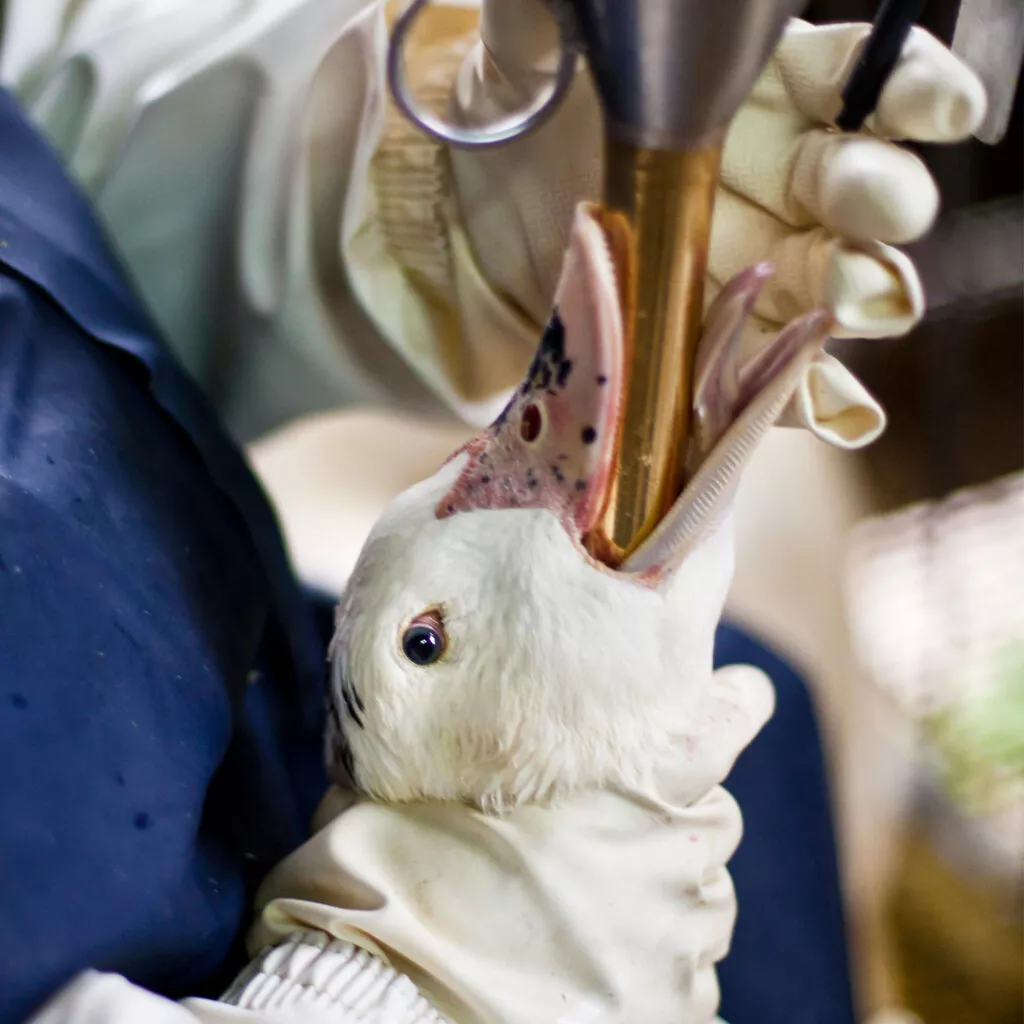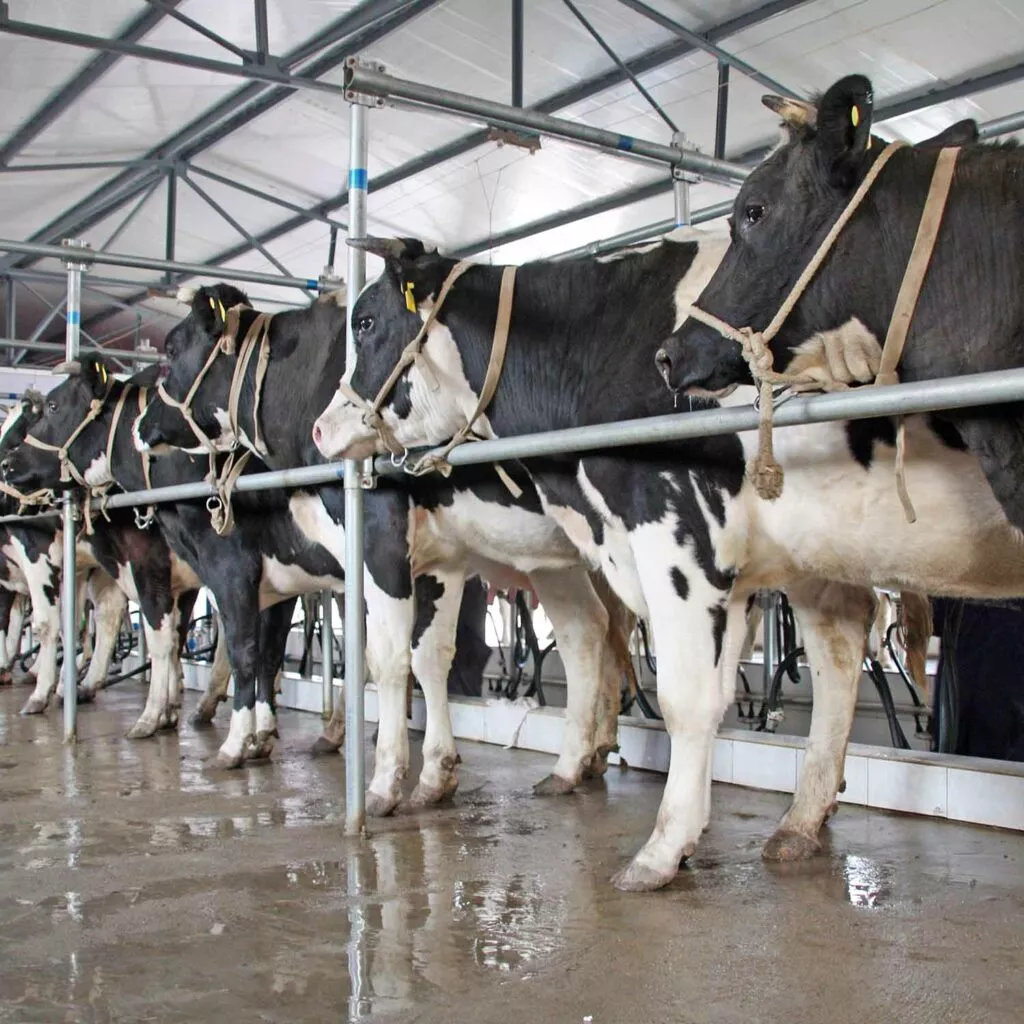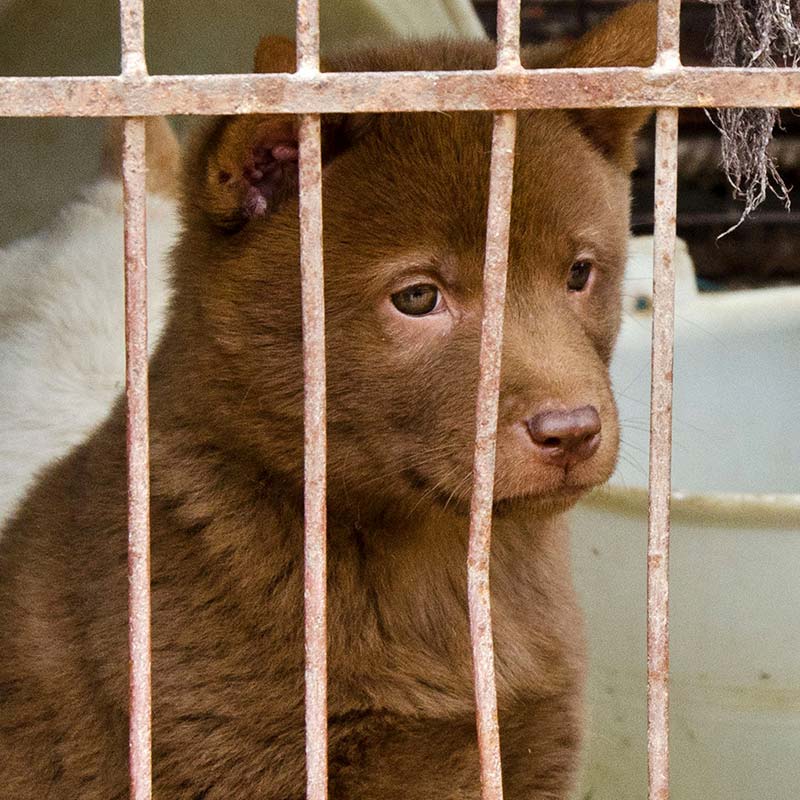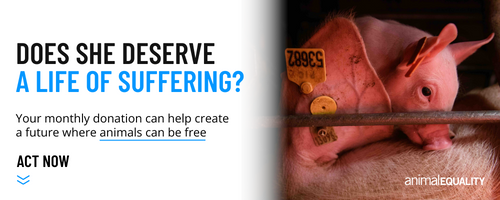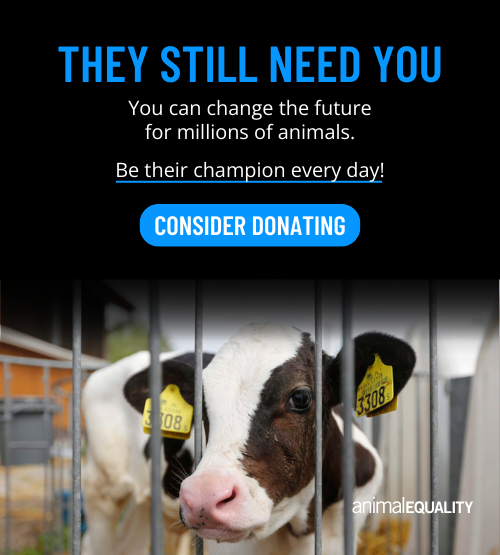
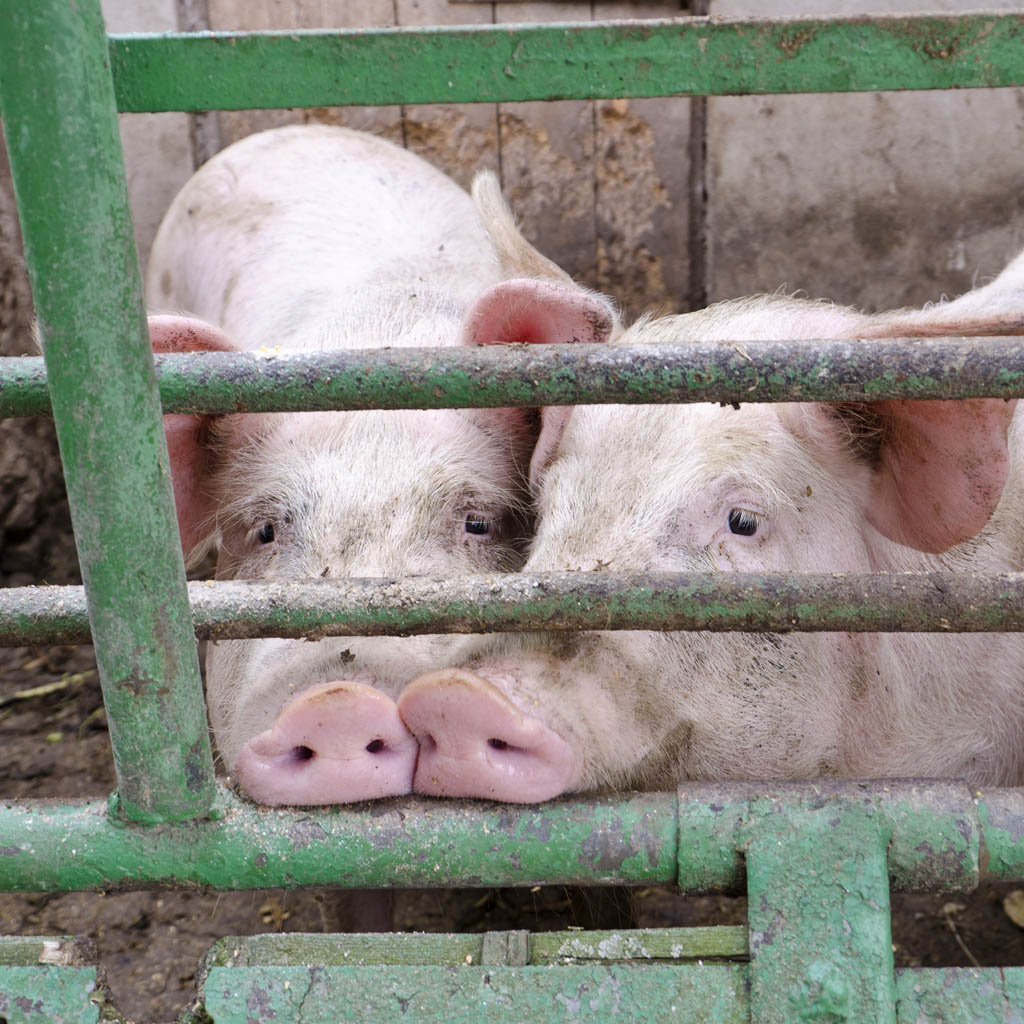
New USDA Law Prioritizes Industry Profits Over Pigs’ Lives
This article was originally published on November 19, 2019, and updated on January 24, 2020.
In the animal agriculture industry, bodies are commodities. The result is that profits are routinely prioritized over animal welfare.
A new USDA regulation illustrates this phenomenon precisely. The rule change will allow pig slaughter establishments to operate without maximum line speeds. This will inevitably result in increased rates of improper stunning and thus higher instances of pigs being slaughtered while still fully conscious.
BACKGROUND: The USDA’s Food Safety Inspection Service (FSIS) is charged with ensuring that all federally inspected slaughterhouses comply with the Humane Methods of Slaughter Act (HMSA)—the most important provision of which requires that certain animals1 (including pigs) be “rendered insensible to pain” prior to being killed (with exceptions for religious slaughter). Despite this, animals are routinely slaughtered while still fully conscious. This is because HMSA enforcement is dismal, and slaughterhouse employees are forced to keep up with grueling line speeds—up to 1,106 animals per hour at market hog establishments.
THE RESULT: Fully conscious animals writhe in pain and squeal in fear while bleeding out, shackled upside-down by one leg as they move along a conveyor system toward the scalding-hot water bath intended to soften their skin and remove their hair. Many of these animals do not fully bleed out before reaching the bath, and are thus boiled alive.
CORPORATE GREED: Despite these well-documented problems, the hog industry has been pressuring USDA for years to allow it to increase its line speeds and forego federal oversight of key animal handling activities. Why? Because caps on line speeds and pesky federal inspectors get in the way of higher profits.
OBEDIENT GOVERNMENT: Sadly, the USDA willingly bowed to industry pressure. Earlier this year, FSIS published a proposed rule “to amend the meat inspection regulations to establish an optional new slaughter inspection system for market hog establishments.” The proposal was swiftly and overwhelmingly criticized by groups representing interests as diverse as animal welfare, civil rights, public health, consumer protection, environmental protection, and worker safety. Even former FSIS inspectors criticized the proposal, and USDA’s own inspector general launched an investigation into the department’s rule making process after 17 members of Congress raised alarm about its legality. For its part, Animal Equality joined a coalition of public-interest groups in submitting written opposition to the proposed rule, carefully describing the reasons it mustn’t be implemented.
DEROGATION OF DUTY: Despite this widespread opposition, and in utter disregard of the concerns raised by animal protection groups in particular, the agency pushed the proposal through. It wasn’t even shy about its motive, stating: “This increase in line speed is synonymous with an increase in industrial efficiency.” The agency seems entirely indifferent to the fate of the thousands of additional hogs whose throats will be cut while fully conscious. This is a direct derogation of its responsibility to ensure compliance with the HMSA.
IMPROPER STUNNING: One can expect the instances of improper stunning described above to increase along with the line speeds. Many hog slaughter operations in the U.S. attempt to carry out the mandate of the HMSA by shooting each animal in the forehead with a “captive-bolt” pistol prior cutting their throat. However, as countless undercover investigations at hog slaughter plants have documented, this process routinely fails.
INCREASED IMPRECISION: Relative to other species, a pig’s brain lies deep inside their head with a mass of sinuses lying between the frontal bone and the brain cavity. Making matters worse, the target area for administering a proper captive-bolt shot is very small, and this problem can be exacerbated by the curvature of pigs’ foreheads. Add to this the fact that these animals quite clearly do not want to die, so they struggle to escape—making placement of an effective shot exceedingly difficult, and this difficulty increases as slaughter lines speed up.
WHAT THE AGENCY IS SAYING: In a remarkable display of Orwellian doublespeak, the agency says it “expects that the new inspection system will improve animal welfare,” but it has not provided any evidence for this highly counterintuitive assertion.
OTHER CHANGES UNDER THE NEW RULE:
- Reduces the number of federal inspectors on site.
- Shifts responsibility for sorting injured and ill animals from federal inspectors to slaughterhouse employees, who are under heightened pressure to maximize profits for their employer.
- Also makes the slaughterhouse (as opposed to federal inspectors) responsible for documenting sick or injured animals, creating a significant conflict of interest.
- On average, it is expected that one additional animal will be killed every 30 seconds (120 more per hour). That means significantly larger profits.
WE’RE SUING: In June of 2019, the U.S. House of Representatives approved language in the 2020 federal funding bill that would’ve blocked pig slaughterhouses from adopting this reckless high-speed slaughter system, but unfortunately Congress did not add this measure to the bill. Animal Equality and six other organizations have filed a lawsuit challenging the USDA’s cruel and dangerous decision.
WHAT YOU CAN DO: The best thing you can do to make sure pigs aren’t suffering is to simply leave them off your plate. There are so many delicious alternatives to meat nowadays.
STAY INFORMED! SUBSCRIBE TO OUR NEWSLETTER TO STAY UPDATED ON THIS LAWSUIT AND OTHER ISSUES AFFECTING ANIMALS
- As a matter of law, the following species need not be stunned before slaughter: birds (which comprise over 95% of all land animals killed for food), rabbits, aquatic animals, and “exotic” animals, such as reindeer, elk, deer, antelope, bison, and water buffalo.

